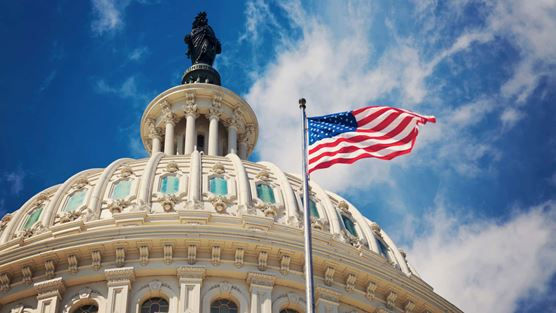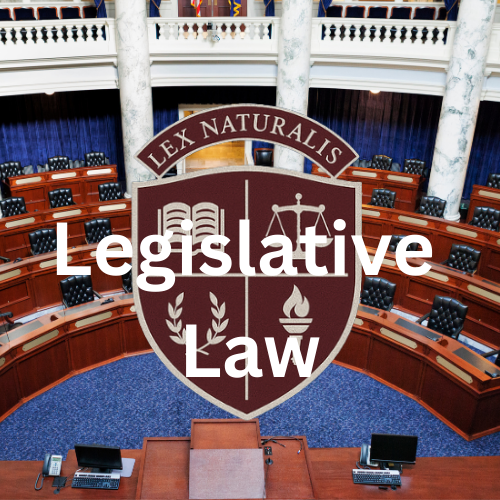The Rule of Law vs. Rule by Law An Essay on the Foundations of Liberty and the Mechanics of Power
- Dr. Byron Gillory
- Jun 19
- 6 min read

Introduction
The phrase “rule of law” is often invoked with reverence by politicians, judges, and citizens alike. It evokes a vision of legal order, impartial justice, and the restraint of arbitrary power. Yet the mere presence of laws—statutes, regulations, and decrees—does not guarantee the reality of the rule of law. In many regimes, we find a perversion of the ideal: “rule by law.” Here, law becomes a tool for control rather than a bulwark against tyranny. The distinction is subtle but profound.
This essay undertakes a comprehensive exploration of the rule of law versus rule by law. We will define each concept, trace their historical and philosophical roots, explore how they manifest in different political regimes, assess their implications for liberty and legitimacy, and respond to key criticisms. Our focus will be on defending the rule of law as the necessary condition of free society, and exposing rule by law as the legal cloak of despotism.
I. Definitions and Conceptual Distinctions
1.1 Rule of Law
At its core, the rule of law means that all persons—including those in positions of power—are equally subject to publicly known, consistently applied, and morally anchored legal rules. It assumes that law is an expression of justice, not merely a command. Features of the rule of law include:
Generality – Laws apply to everyone, not selectively to persons or groups.
Publicity – Laws are accessible and known to those expected to follow them.
Prospectivity – Laws apply to future conduct, not retroactively to past actions.
Stability – Laws are not subject to arbitrary or constant change.
Due Process – Legal rights must be respected in procedure and substance.
Separation of Powers – Power is divided to prevent domination.
Judicial Independence – Courts can review and check governmental action.
As F.A. Hayek argued, the rule of law ensures that government acts through “general rules” rather than “specific commands” directed at particular ends. In this sense, law binds rulers as much as subjects.
1.2 Rule by Law
By contrast, rule by law refers to a system in which law is used as a mechanism for enforcing the will of the state, often without regard to justice, morality, or fairness. In such systems:
Laws are instruments of political control.
The state is above the law, not under it.
Legal mechanisms may be procedurally regular but substantively unjust.
Compliance is compelled, not consented to.
Courts are extensions of executive power.
As Lon Fuller warned, mere legality without morality can lead to tyranny cloaked in legal form. Nazi Germany, apartheid South Africa, and modern China all exemplify regimes where “rule by law” has been used to mask oppression in legal robes.
II. Historical Foundations
2.1 Ancient Roots
The origins of the rule of law can be found in classical Greece. Aristotle distinguished between governance by laws and governance by men. He insisted that laws, as expressions of reason, should govern the city—not the passions of rulers.
The Roman Republic built on this idea, developing the jus civile and emphasizing the equality of Roman citizens before the law. The Twelve Tables and later Roman jurists codified principles of fairness, property rights, and civil procedure.
2.2 Medieval Christianity and Natural Law
The rule of law received theological reinforcement in medieval Christianity, particularly through the natural law tradition of Aquinas, who held that human laws must conform to divine and natural justice or they are not truly law at all (“lex iniusta non est lex”).
Magna Carta (1215) was a watershed moment in English law, asserting that the king himself was subject to the law. The barons secured guarantees of due process, trial by jury, and limits on arbitrary taxation.
2.3 Early Modern Thought
The Protestant Reformation, with its emphasis on individual conscience, and the political philosophy of John Locke, who argued that government must operate under settled law to preserve natural rights, advanced the rule of law ideal.
Locke wrote:
“Where-ever law ends, tyranny begins.”
This principle was echoed by the American founders, who embedded the rule of law in the structure of the Constitution, with enumerated powers, judicial review, and the Bill of Rights.
2.4 The Rise of Legal Positivism
In the 19th century, thinkers like John Austin and Hans Kelsen began to separate law from morality, advancing a positivist view: law is valid if it is enacted by proper authority, regardless of its content.
This opened the door for rule by law—legal systems that meet formal criteria but lack moral legitimacy. Totalitarian states became masters of legal form without legal justice.
III. The Rule of Law in Constitutional Government
3.1 The American Experiment
The U.S. Constitution exemplifies the rule of law:
Separation of Powers limits the accumulation of authority.
Checks and Balances enable institutions to restrain each other.
Judicial Review allows laws to be struck down when unconstitutional.
The Bill of Rights enumerates fundamental liberties immune from majority vote.
The Constitution enshrines the supremacy of law over politics. It assumes that rights exist prior to government and that the purpose of government is to secure those rights.
3.2 Constitutional Interpretation and Rule Integrity
The durability of the rule of law depends on how legal texts are interpreted. Originalism and textualism attempt to preserve the fixed meaning of law, while living constitutionalism risks transforming law into judicial will.
When courts become political actors, interpreting law to suit policy preferences, the rule of law erodes into rule by judges.
3.3 Civil Society and the Culture of Law
Legal institutions cannot function in isolation. They require a civil society that values liberty, honesty, and restraint. Rule of law is not just a formal arrangement—it is a cultural inheritance that must be taught, practiced, and defended.
IV. Rule by Law: The Machinery of Legalized Tyranny
4.1 The Totalitarian Model
Authoritarian states often operate under laws and constitutions, yet lack the rule of law. For example:
The Soviet Union had detailed criminal codes and courts, yet used them for ideological repression.
Nazi Germany passed laws that legalized the persecution of Jews, suppression of dissent, and military aggression.
Modern China uses laws to enforce party control, restrict speech, and suppress religion, while presenting itself as a “law-based” state.
These regimes demonstrate that legality without liberty is possible—and dangerous.
4.2 Features of Rule by Law
Executive Control over Courts
Law as Political Weapon
Selective Enforcement
Retroactive Laws
National Emergency Decrees
Rule by law creates a veneer of legitimacy while protecting those in power. It often includes over-criminalization, surveillance, secret courts, and loss of due process.
V. Rule of Law and Liberty: A Moral and Political Defense
5.1 Liberty Under Law
The rule of law is not the enemy of liberty—it is its guardian. Ordered liberty means that individuals are free within a framework of moral limits that protect the equal rights of all.
As Hayek argued, liberty requires rules that are predictable, not arbitrary edicts. Without the rule of law:
Property becomes insecure.
Speech is chilled.
Markets become crony systems.
Rights become privileges granted by power.
5.2 The Moral Legitimacy of Law
The rule of law requires more than procedural formality. It must be grounded in natural law principles:
Human dignity
Equal treatment
Justice as giving each his due
Restraint of coercive force
Law must be just to be legitimate. Mere legality does not equal authority. As Martin Luther King Jr. said:
“An unjust law is no law at all.”
VI. Responses to Common Objections
6.1 “Rule of Law Is Elitist or Conservative”
Critics claim the rule of law protects the status quo. But this misunderstands its purpose: to restrain arbitrary power, not to preserve inequality. The rule of law is radical in its commitment to principled justice.
6.2 “Law Is Always Political”
While all law is enacted by political processes, the rule of law aims to depoliticize enforcement and interpretation. The goal is not neutrality in values, but predictability, impartiality, and moral accountability.
6.3 “Rule of Law Doesn’t Work in Practice”
Failures of the rule of law are real—but they do not invalidate the ideal. They invite reform, not rejection. Without the rule of law, there is only power.
VII. Rebuilding the Rule of Law in Modern Politics
7.1 Reasserting Constitutional Limits
Restore enumerated powers
End judicial activism
Reform administrative agencies
Reinvigorate federalism
7.2 Strengthening Judicial Independence
Safeguard courts from politicization
Appoint textualist judges
Enforce term limits where feasible
7.3 Cultivating a Legal Culture
Legal education in classical jurisprudence
Civics rooted in natural rights
Public accountability for legal violations
Conclusion
The rule of law is more than a legal slogan. It is the very soul of liberty. It means that no man is above the law—and no man is beneath its protection. It demands that power be used only in accordance with justice, that law be moral as well as binding, and that government serve, not dominate, the governed. To accept rule by law—to tolerate injustice cloaked in legality—is to abandon the dream of ordered liberty and return to the jungle of power.
We must not confuse the machinery of legalism with the substance of justice. To preserve a free society, we must revive, defend, and practice the rule of law—not as a tool of statecraft, but as a covenant of liberty.

Comments